With vivid green heart-shaped leaves, Ficus pumila is a gorgeous little vine that’ll brighten up any naturalistic environment.
And thanks to its miniature size, easy care, and prolific growth habits, it’s quickly becoming a true terrarium staple.
As you’d expect from a plant native to East Asia, it thrives in hot and humid terrarium environments, making it a bulletproof choice for your next project. This aggressive grower will rapidly fill a terrarium and become the star of the show.
Let’s take a closer look.
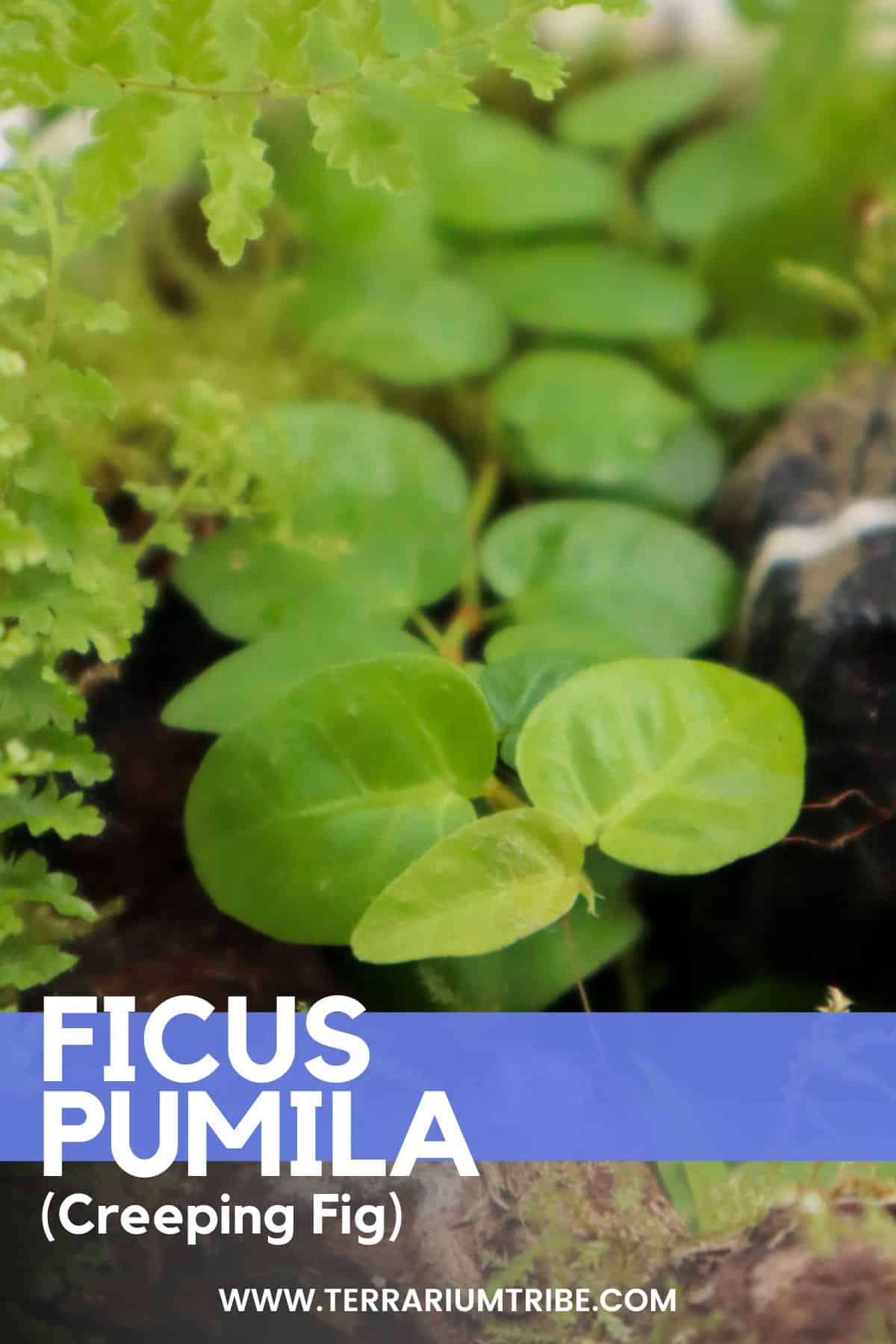
Where to Buy Ficus pumila
See the links below to purchase from reputable terrarium plant shops and marketplaces (may include affiliate links).
Ficus Pumila Care & Growth
| Plant Type | Vine |
| Lighting | Bright, indirect light |
| Temperature | 55-80°F (12-26°C) |
| Watering | Regular, even moisture |
| Humidity | High humidity (60-90%) |
| Growth | 2-3 inches (but climbs 10 ft+) |
Lighting
While bright, indirect light is unsurprisingly the superior option (when isn’t it?), Ficus pumila can do well in different lighting conditions.
The Creeping Fig can get a little leggy in low light, but it’ll still withstand it like a champ.
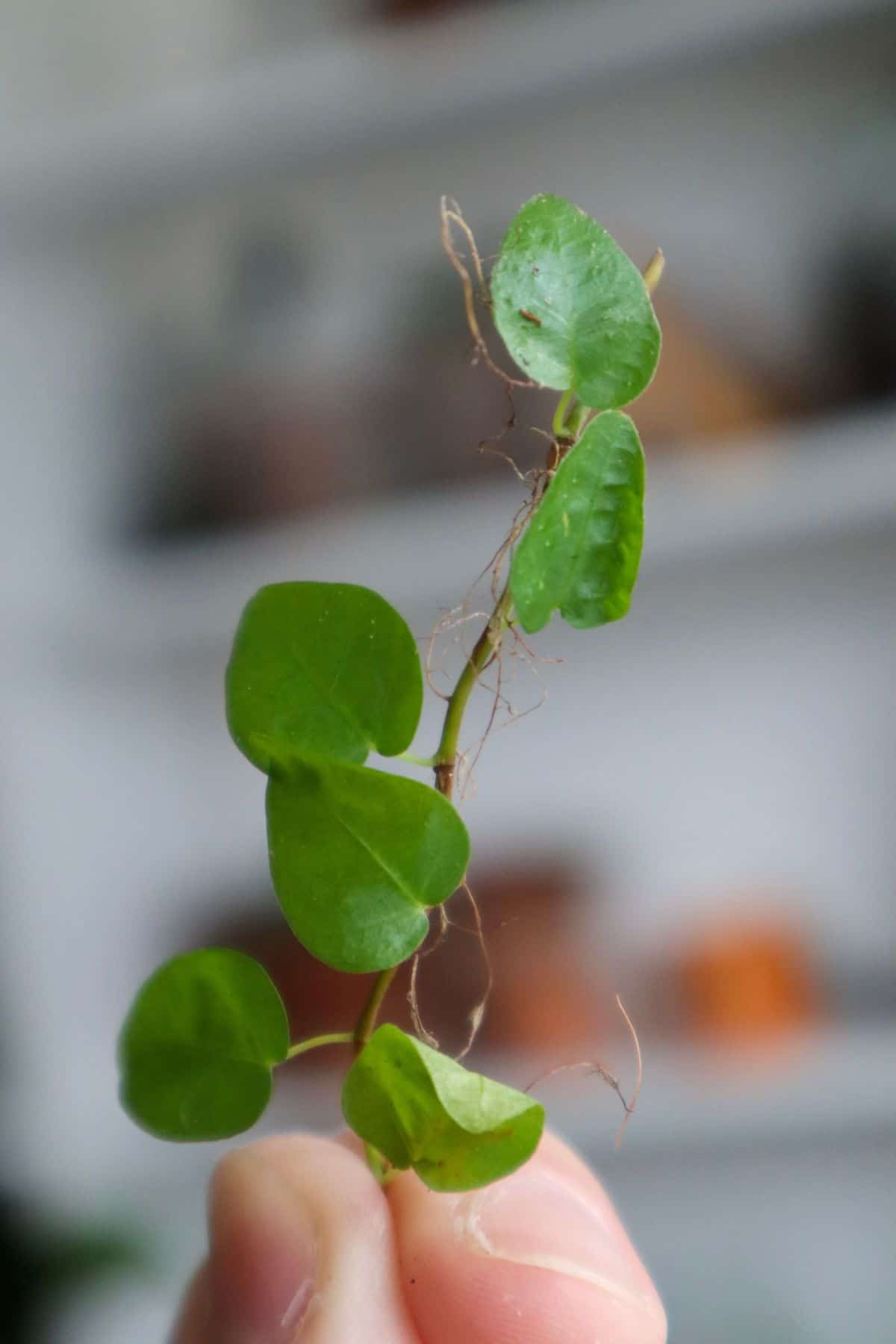
And while avoiding direct sunlight is standard for tropical species, I’ve seen plenty of Ficus pumila situated in full sun for some time with no problem – it will grow lovely and compact there.
(Just be aware that other terrarium plants won’t fare too well in direct sun!)
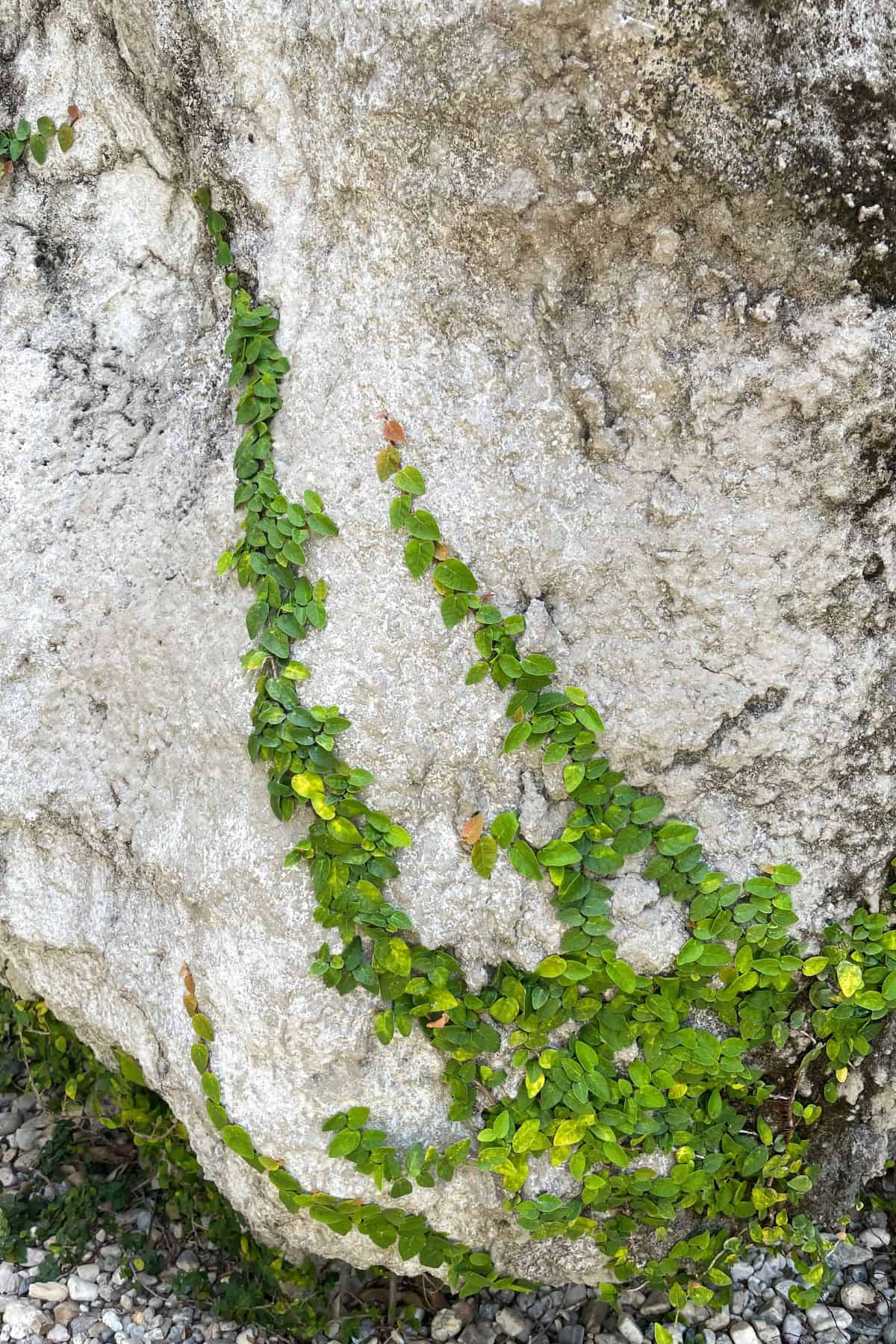
Ultimately, you can pretty much put your plant wherever you like it, and rest assured that it’ll make the most of whatever it’s given.
Watering
The Creeping Fig vine likes a consistently moist environment, but it’s pretty hardy.
It will tolerate some level of dryness, and at the opposite end of the scale, I’ve even seen it grow happily in paludarium and riparium projects where it’s exposed to running water.

If planted terrestrially, the issue you’re most likely to run into is root rot – Ficus species are fairly susceptible if sat in overly soggy soil.
A drainage layer can provide extra security if you’re a little heavy-handed with the spray bottle. Better safe than sorry.
Substrate / Soil
Ficus pumila will readily grow in most substrates.
As a climber, it covers everything it touches and even thrives on surfaces from which it can’t get any nutrients, so it doesn’t need anything fancy.
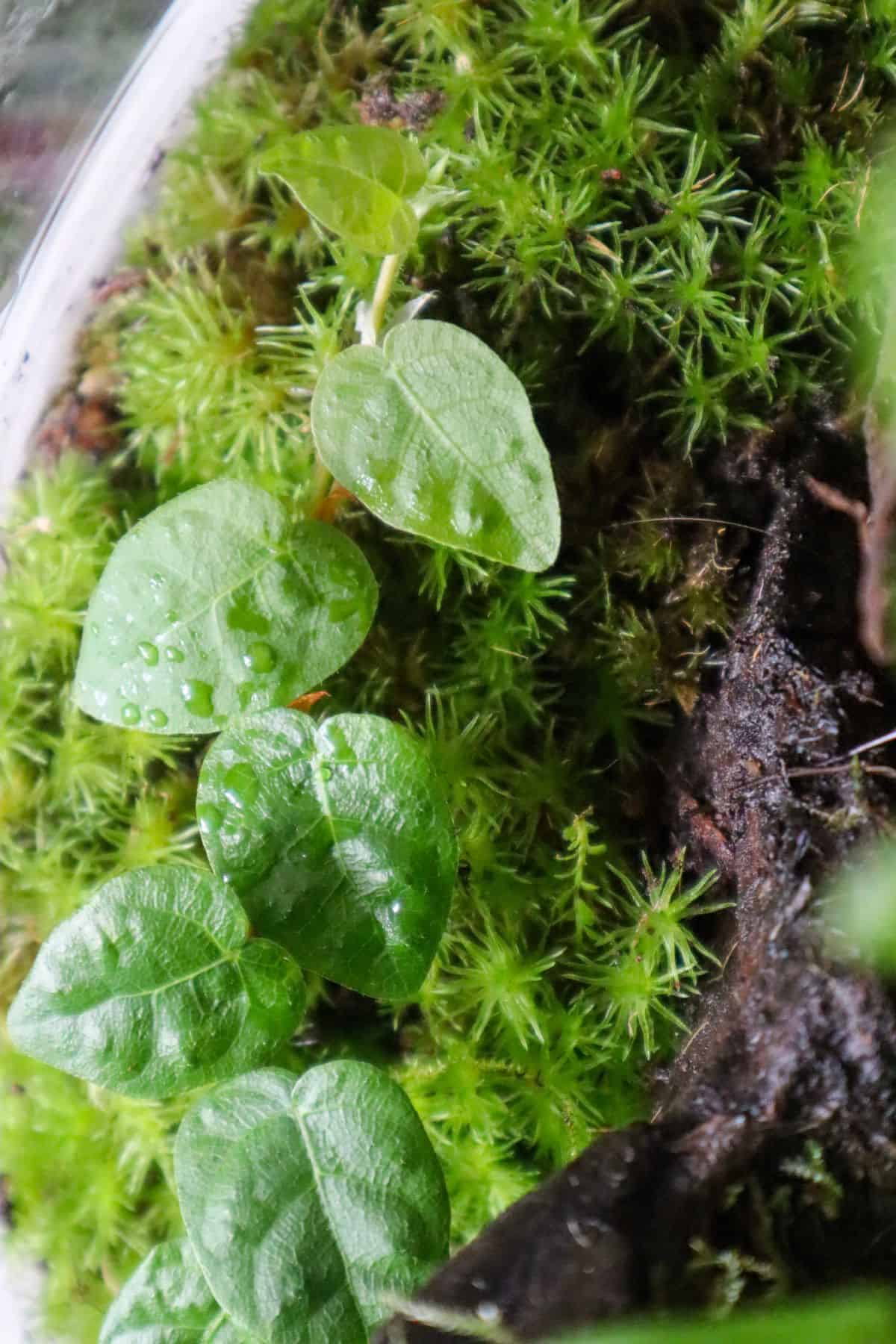
That said, if you’re planting your Ficus terrestrially, a mix with good water retention and drainage will be appreciated.
I like to use coco coir as a moist base and add some bark, pumice, or charcoal to boost drainage.
👉 Our terrarium substrate mix is a great fit here.
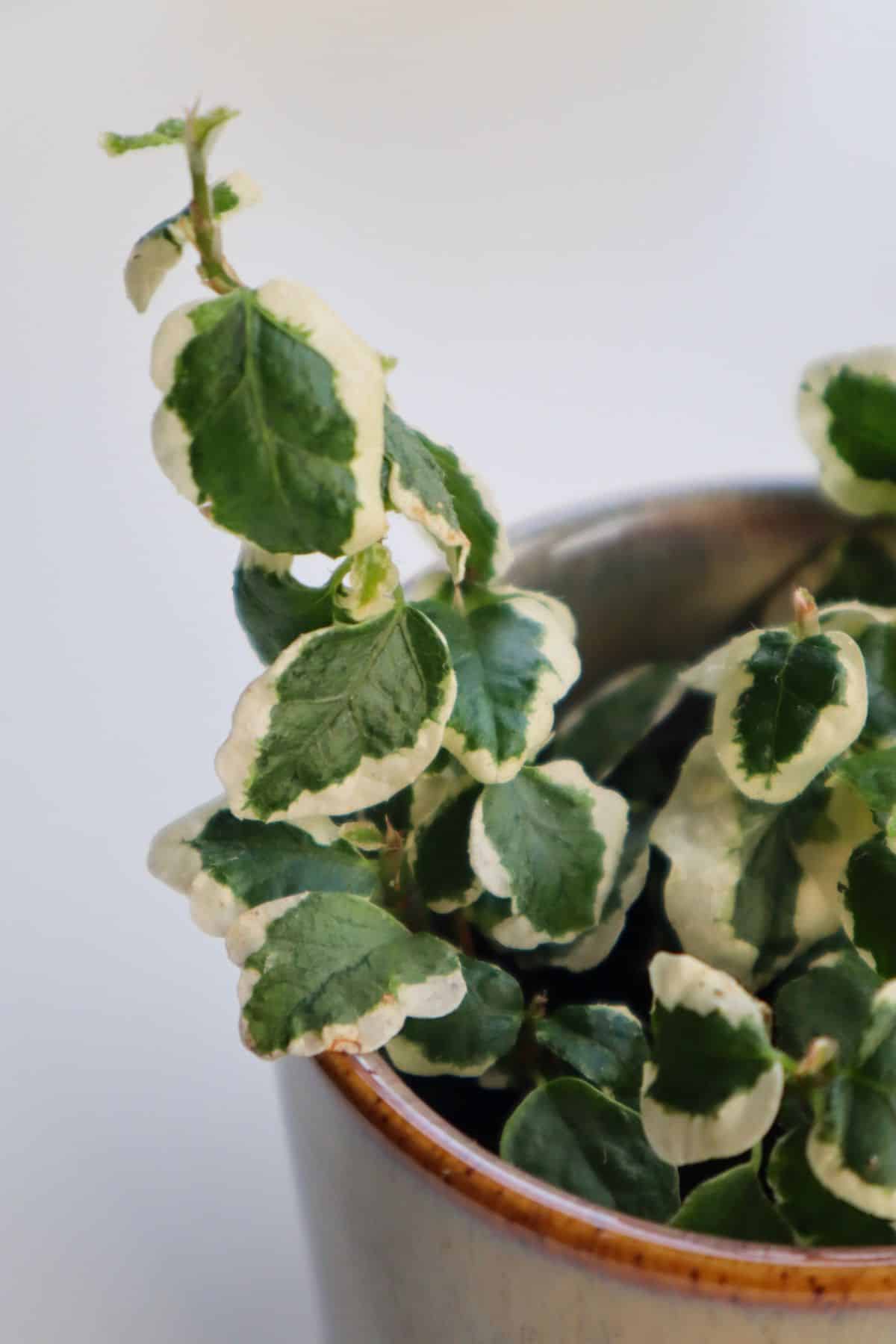
A quality mix is essential in a closed terrarium system.
Temperature & Humidity
While the Creeping Fig is an adaptable plant in the lighting and watering departments, it isn’t when it comes to humidity.
Keeping this Ficus as a houseplant will often lead to plenty of crisping and curling.
60% humidity is about as low as you can comfortably go. The more humidity, the better, so a closed terrarium is by far the best way to keep this plant happy.
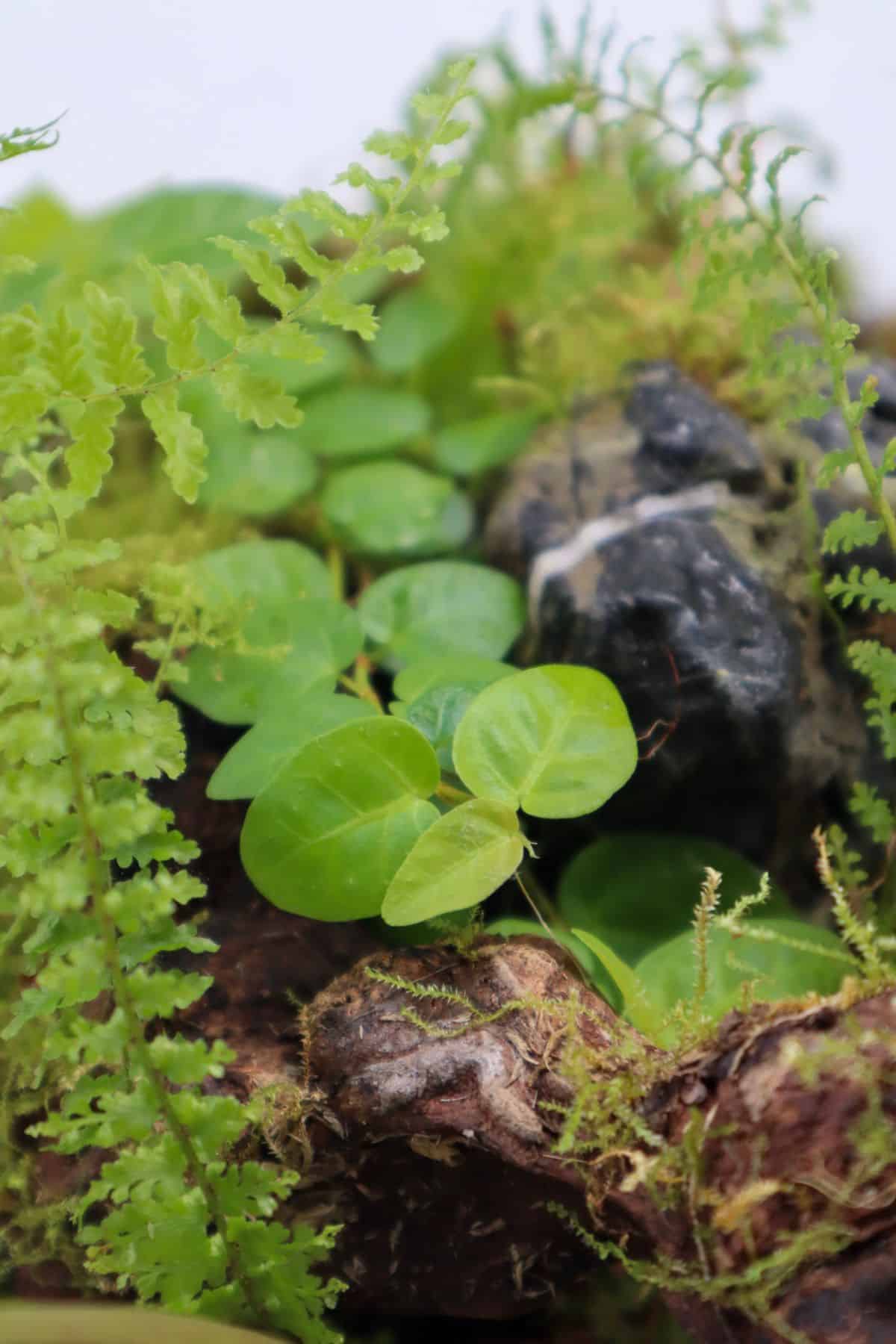
Growth
This versatile vining species is a prolific grower, and once settled in a terrarium, you can expect it to quickly form ground cover before climbing anything and everything it reaches.
(Literally, I’ve had it climbing the glass before!)
It looks incredible when allowed to grow wild in a large terrarium, but it’s easily maintained, too, making it an excellent fit for tiny terrariums.
The leaves will stay relatively the same size as it grows, with mature leaves on extremely large outdoor plants reaching around 2.5 inches.
So while you might like to trim it to keep the length in check, you can rest assured that the leaves themselves won’t outgrow the container.
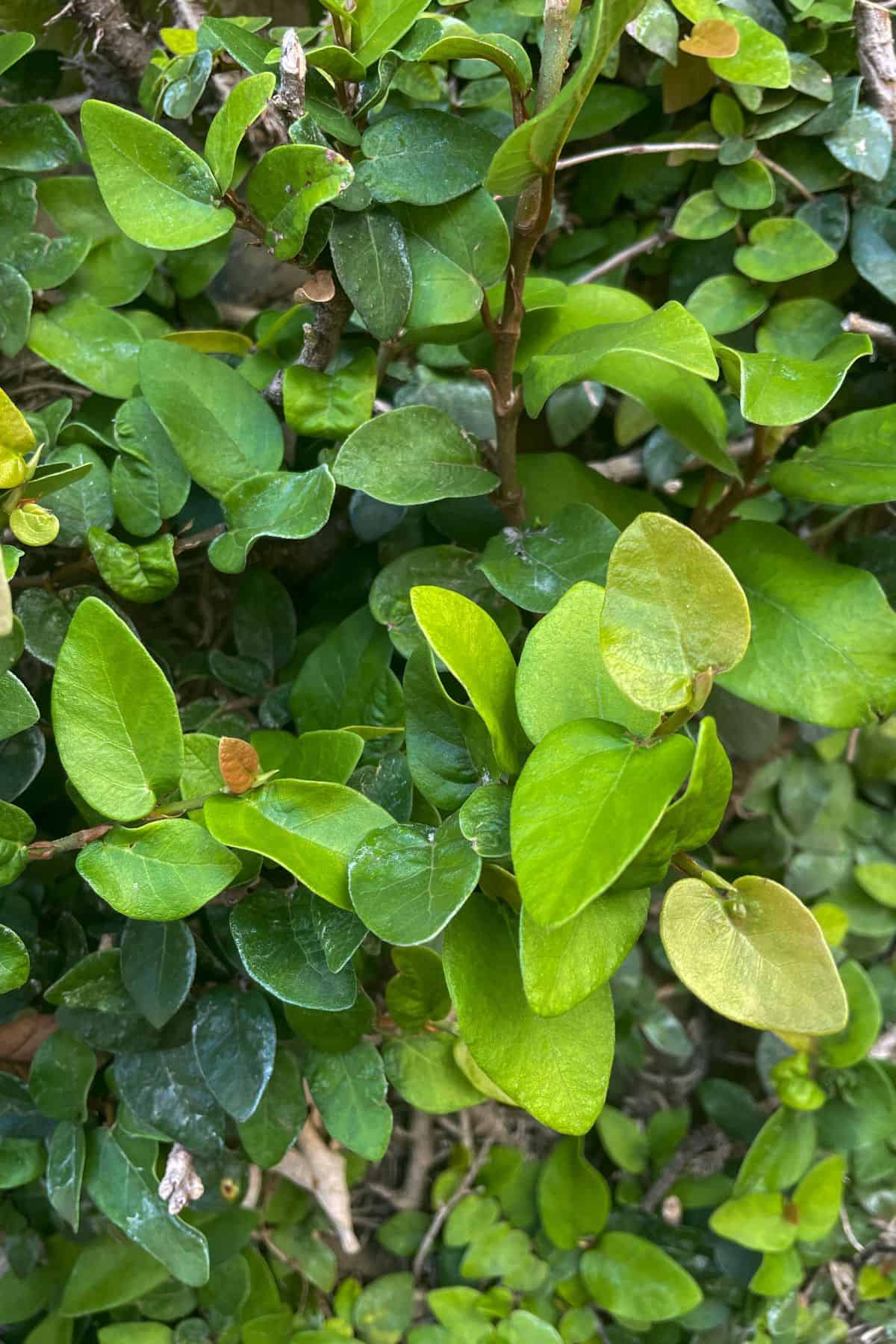
Propagation
Propagating your Creeping Fig is effortless, and with such a fast growth rate, you’ll never be short of material to propagate!
When trimming the plant back, take some stem cuttings, making sure you have a few leaves on each.
Then just chuck it in a closed terrarium and leave it alone.
No planting, no soil, no water – nada!
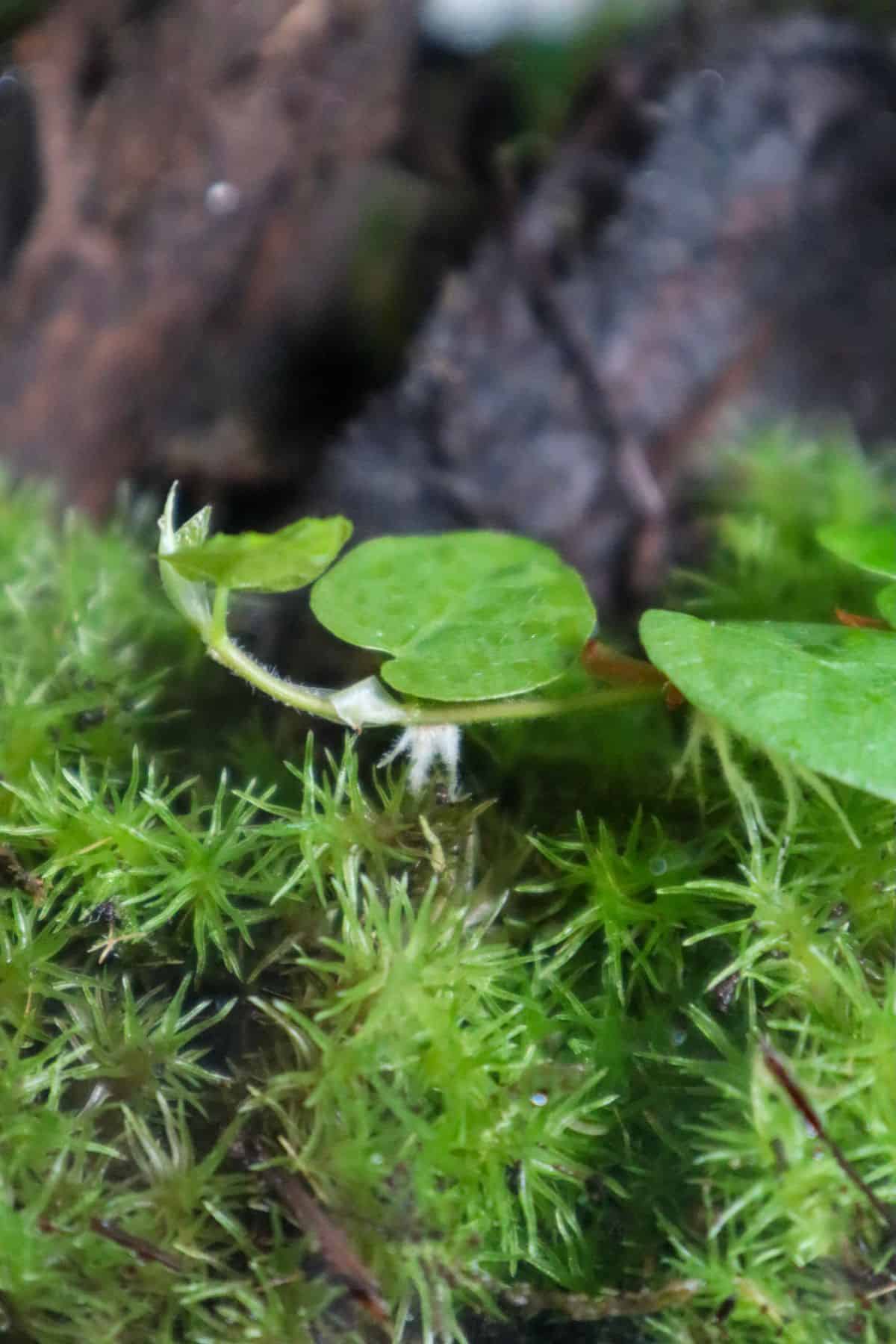
I exclusively use this method, and it works every single time.
Varieties & Similar Plants
Not content with the classic? There are some other funky varieties of Creeping Fig that are excellent for terrariums.
- Ficus pumila ‘Variegata’ (which I’ve already shown you) has lovely creamy-white variegation.
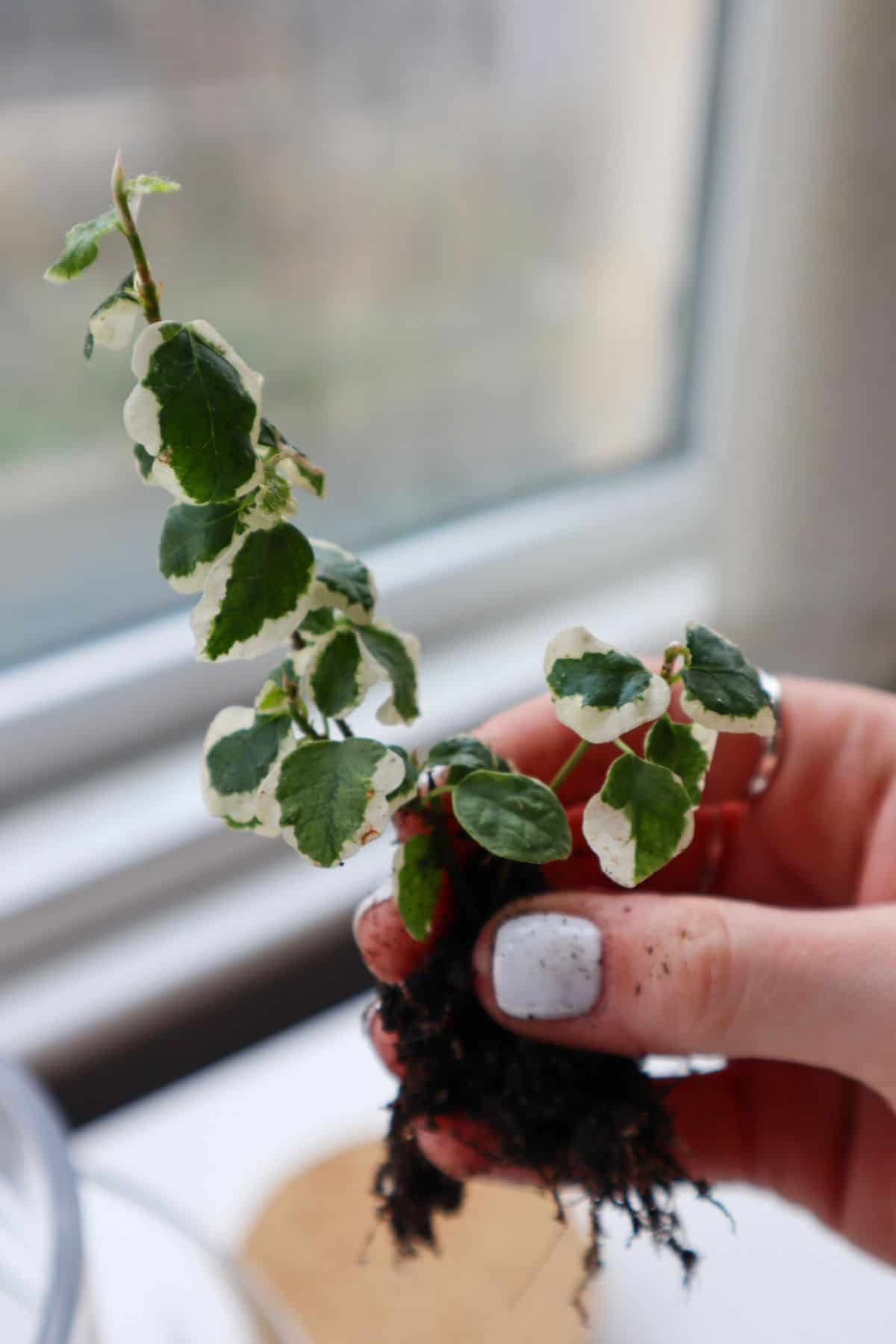
- Ficus pumila ‘Minima’ has even smaller leaves.
- Ficus pumila ‘Quercifolia’ (Oak Leaf Creeping Fig) has gorgeous oak leaf-shaped foliage. It’s sometimes known as the String of Frogs!
- Ficus pumila ‘Curly’ has irregularly shaped delicate leaves that curl over a central lime green vein.
Whatever variety you choose, rest assured that the Creeping Fig is a fantastic terrarium plant.
